There have been many armoured vehicles designed and put into use. Some of them are a bit odd, especially those originating from Sweden- this may be something to do with not having fought in a European war since 1814) Another example is a Swedish tank that could run on either wheels or tracks; that was also produced by the Landsverk company. However an armoured motorcycle does somewhat raise the bar of oddness.
The manufacture of armoured vehicles was forbidden in the German Reich under the Treaty of Versailles. To evade this, the the GHH (Gute Hoffnungs-Hütte) steelworks group, based in Oberhausen had acquired the Landsverk company in Landskrona, Sweden, in the late 1920s. This was the company that produced prototypes of armoured motorcycles.

THE SWEDISH LANDSVERK-190
 |
| Left: The Swedish Landsverk-190/fm30: 1930
The Swedish Landsverk-190 was developed in the early 1930's, based on a Harley-Davidson. Here one of the prototypes is fitted with an armoured sidecar; the gun is at a high elevation, as if for the anti-aircraft role. The driver has a vision flap in front of him; when this was lowered he had to squint through a slit in the flap. The box with a hinged flap just above the front-wheel is believed to have housed the headlight. There was no rear armour.
The Landsverk-190 was the first of a series of Swedish armored motorcycles; it was used for experimental trials by the Swedish army, who called it the Pansarbil fm/30. It is not clear if one or two were built.
|
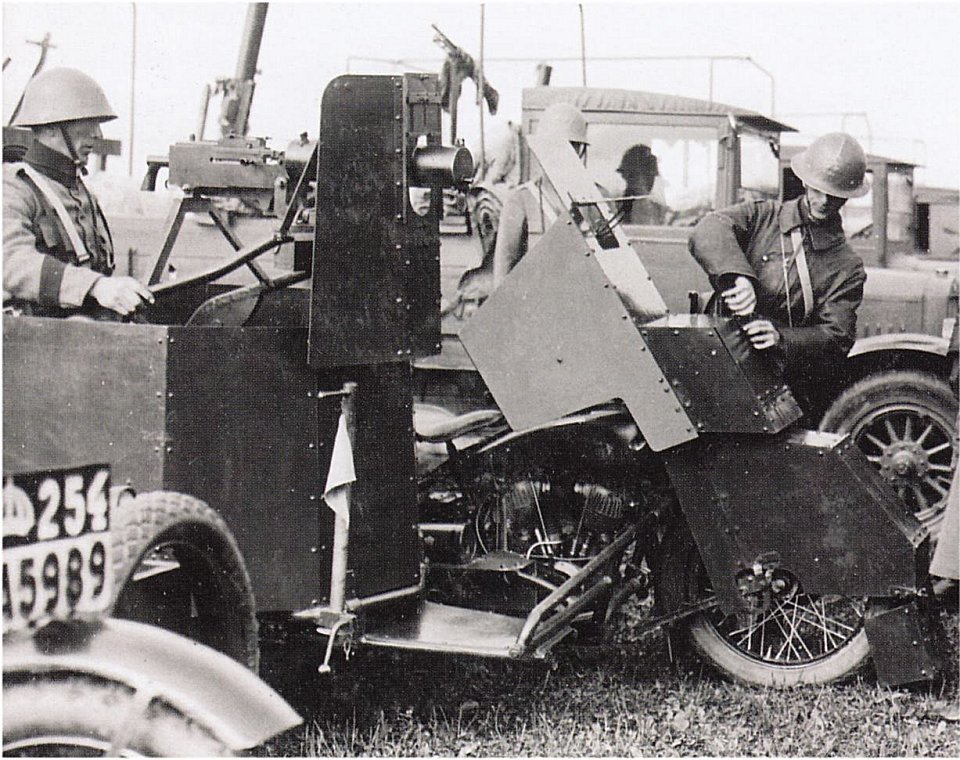 |
| Left: The Swedish Landsverk-190/fm30: 1930
Another view of a Landsverk-190, with its machine-gun horizontal, and the driver's vision flap open. The gun (the only armament) was a belt-fed 6.5 mm kulspruta (ksp) m/14-29 machine gun, which was a Swedish modification of the water cooled Browning M1917.
Here the V-twin Harley engine is clearly visible.
|

THE SWEDISH LANDSVERK-210
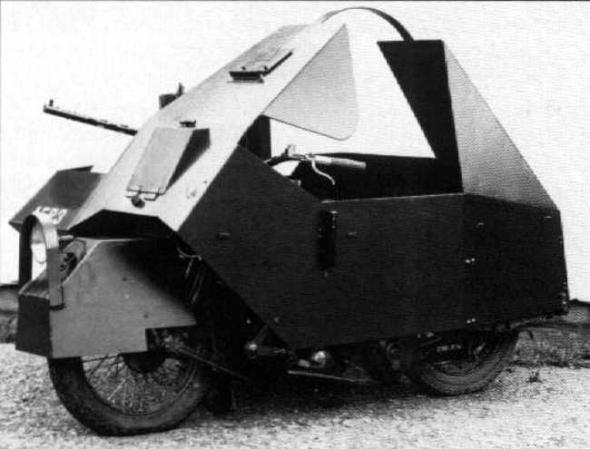 |
| Left: The Swedish Landsverk-210/FP-3: 1932
Landsverk tried again. This machine was based on a Harley-Davidson motorcycle equipped with a 1200 cc V2 engine giving 30 HP. The armament was a Madsen light machine gun
The armour plate was 4.5 mm thick, which would not stop rifle calibre bullets if they hit head-on. The slope of the armour may have helped somewhat with that. It was an advance on the Landsverk-190 armour as it was partly welded. There was better side protection and now some rear armour. There, the armour ahead of the driver had a hinged flap with a vision slit, as on the Landsverk-190. There appears to be a hinged flap over the headlight.
Note the curved strip joining the front and rear armour, presumanly to improve rigidity.
|
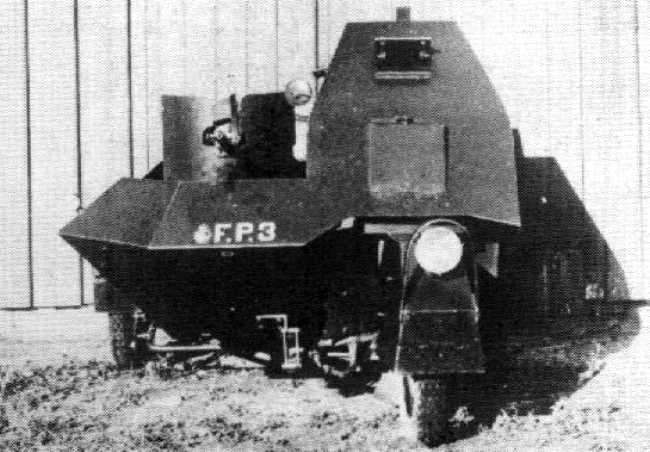 |
| Left: The Swedish Landsverk-210/FP-3: 1932
Here another headlight appears to have been mounted to the curved bracket over the front wheel.
The Landsverk-210/FP-3 was a failure; it weighed a hefty 730 kilograms, making it too heavy to steer properly, and was underpowered so that its cross country mobility was minimal. Trials were abandoned in 1933.
|

THE SWEDISH IMPROVED LANDSVERK-210
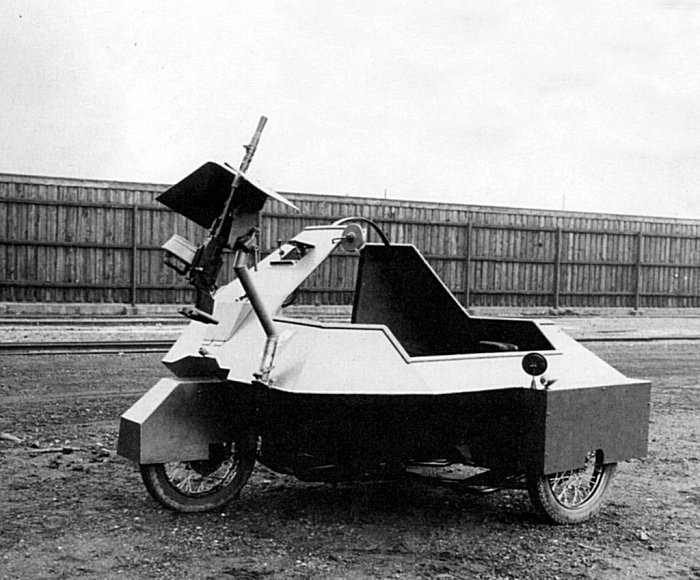 |
| Left: The Swedish Improved Landsverk-210: 1932
Landsverk did not give up. By May 1934, drawings of an Improved Landsverk-210 had been produced. This reduced the weight to 650 kilograms, partly by reducing the armour thickness to 4 mm, but it was still very heavy. The machine gun could be removed from the sidecar and used in the anti-aircraft role, as shown here.
Trials of the original 210 had ceased in 1933, and the improved Landsverk-210 did not find a buyer until 1938, when Baron Friedrich Karl Johannes von Schlebrügge bought one for no less than £28,000 in 2018 equivalent money. The Baron has been described as "the head of Nazi propaganda in Central and South America at the time" but other accounts say that he was jailed by the Nazis during World War II for refusing to rejoin the military, and for protecting Jewish friends; he eventually got away to Mexico.
Diligent googlage has not resolved this contradiction, but the Museum Staff did discover that his daughter Nena von Schlebrügge was once married (briefly) to Timothy Leary, and is the mother of actress Uma Thurman.
Nothing is currently known of the subsequent career of the purchased Improved Landsverk-210.
|
 |
| Left: The Swedish Improved Landsverk-210: 1932
The same model Harley-Davidson was used as the basis for the new design.
The curved strip joining front and back armour has been retained.
|
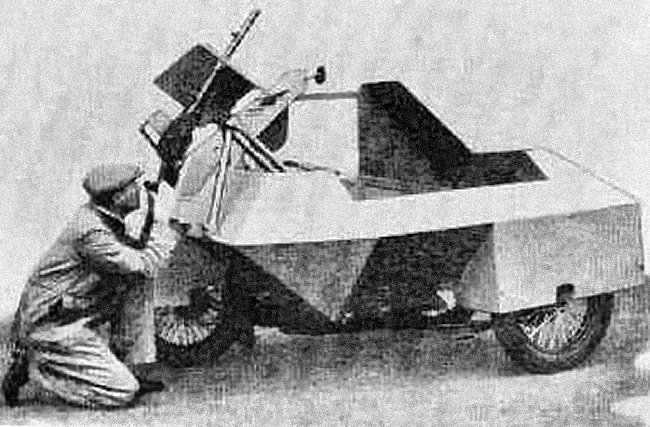 |
| Left: The Swedish Improved Landsverk-210: 1932
The Improved Landsverk-210 in the anti-aircraft role. Note different gun mounting from that shown above.
Apologies for poor picture quality.
|
 |
|
Above: Three views of the Swedish Improved Landsverk-210: 1932
It has been stated that the Improved Landsverk-210 did not have a headlight, but there does seem to be a flap fitted in the right place to cover one.
|

ARMOURED ON ONE SIDE ONLY
This machine was built on the basis of a 350cc Triumph 3SW. Some accounts say 250cc, but this is incorrect.
 |
| Left: Triumph 250cc 3SW armoured on one side: 1940
At first sight the idea of armouring a motorbike on one side only sounds daft, but read on. It may have been a better idea than the machines above.
This machine is believed to have been prototyped in the period after Dunkirk in May 1940, prompted by the fear of German invasion. The idea was that a soldier could ride to a suitable point carrying a Bren gun and then fire from cover provided by the armour on the side of the bike facing the enemy. It would be more manoevrable than a motorbike with sidecar.
Only one was built, and it never saw action. The project was abandoned in October 1940 when the fear of invasion faded. It was probably converted back into a standard motorbike.
|
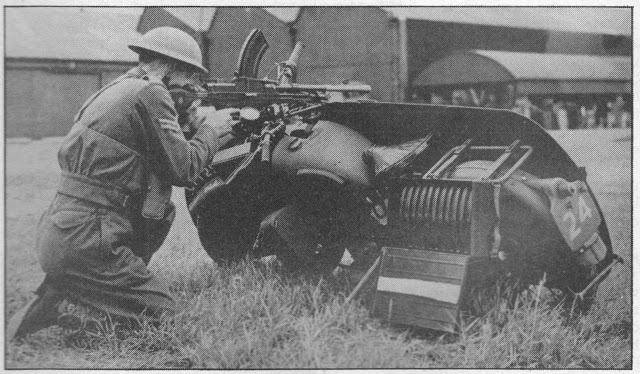 |
| Left: Triumph 350cc 3SW armoured on one side: 1940
This is the plan; it looks as though the side-armour would provide pretty good protection. The right side was covered with 1/4" (6.3 mm) steel plate, and its slope in action would have helped deflect bullets. The engine would also have offered some protection.
The open box at the right appears to hold spare Bren magazines.
|
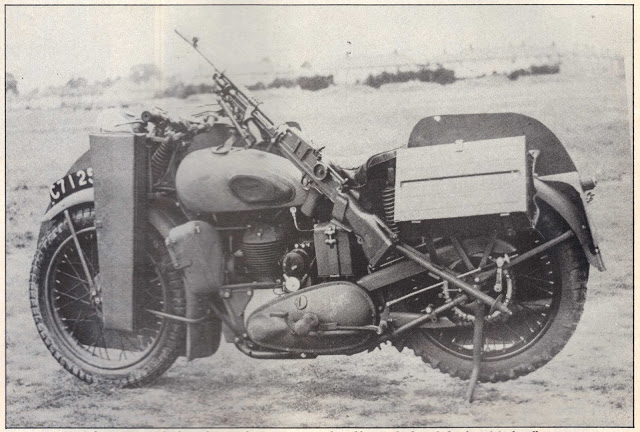 |
| Left: Triumph 350cc 3SW armoured on one side: 1940
The unarmoured left side shows the vertical box carrying the spare Bren barrel; they needed to be changed over periodically to prevent overheating. A counterweight was fitted to balance the armour plate; that is presumably the curved thing just to the left of the engine cylinder. It is believed to be the bike toolbox filled with cast lead. At the right is a rectangular box carrying spare Bren magazines.
The remarkable website here describes the construction of a second side-armoured Triumph 350cc 3SW between 2005 and 2011.
|
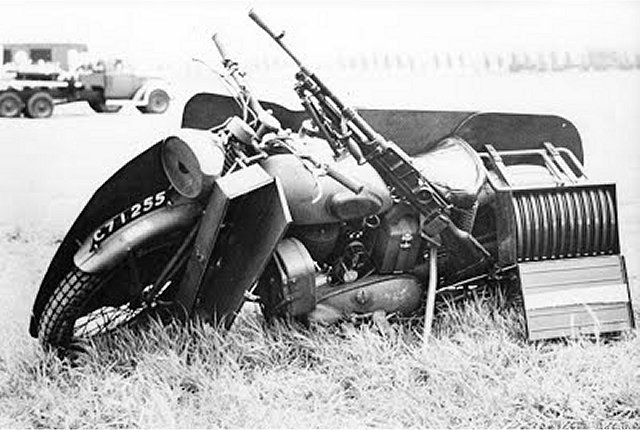 |
| Left: Triumph 350cc 3SW armoured on one side: 1940
Here the vertical box carrying the spare Bren barrel is hanging open. The gun was mounted on the top rail of the bike frame, so the petrol had to be cut back to allow it through.
Note the handle on the side of the Bren gun, for changing barrels.
|
























